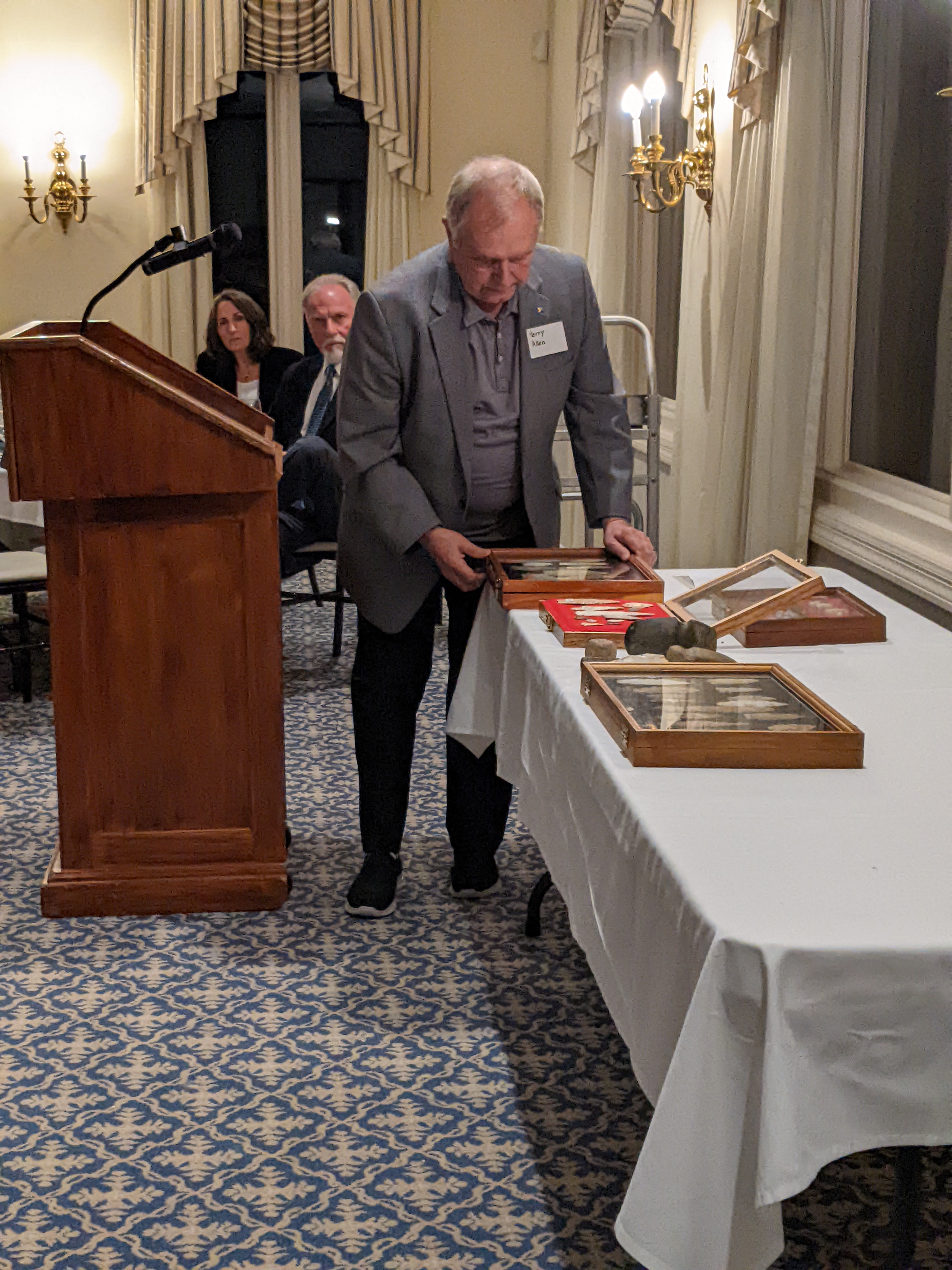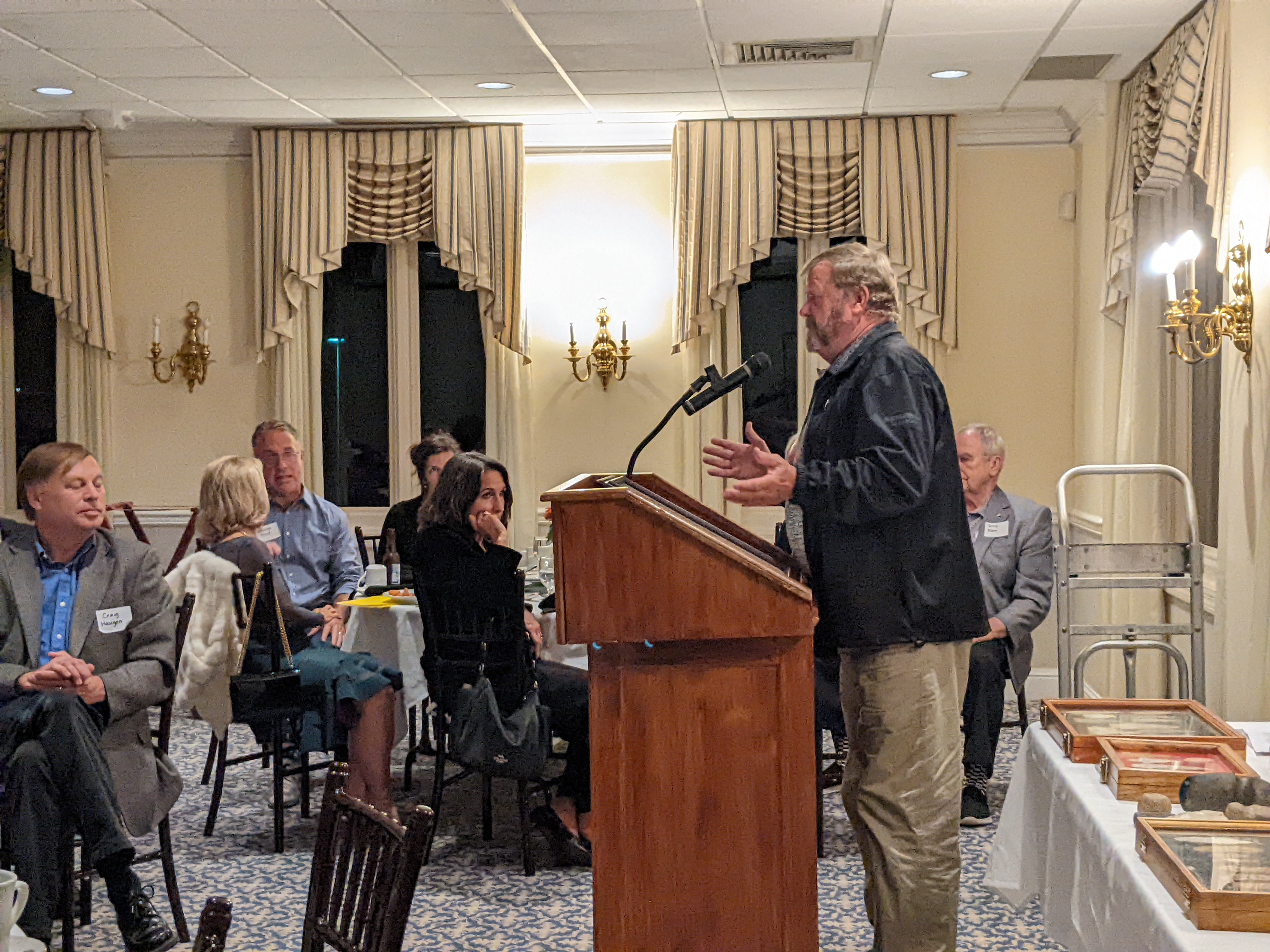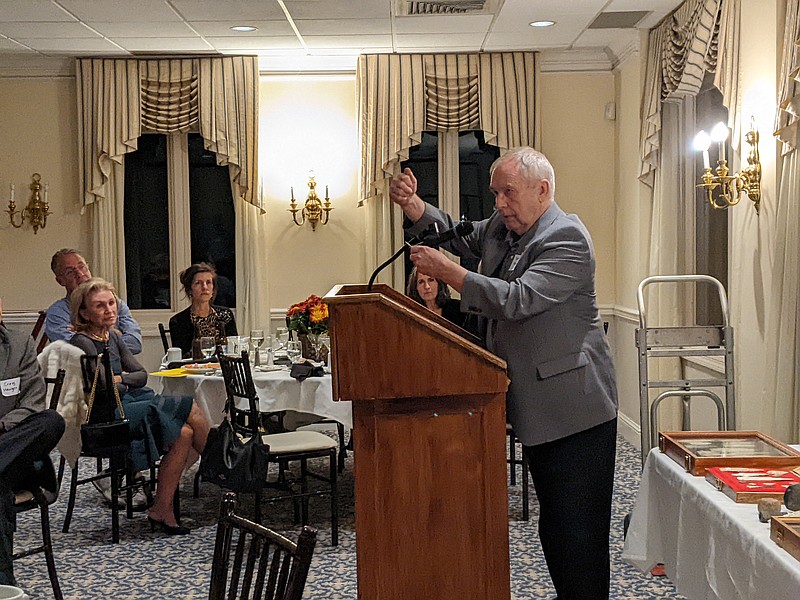Ancient foragers and gatherers occupied the early days of Central Missouri, an expert told the Cole County Historical Society on Sunday evening.
The Historical Society hosted Terry Allen for a talk titled "Indian Archeology of Central Missouri" at its 81st annual dinner meeting. The lawyer of 57 years brought numerous stone points and relics from his personal collection.
Allen has been collecting Native American artifacts since he was a 13-year-old in Butler County, he said.
"When I was 13 I found my first arrowhead," he said. "And it was downhill from there. At one time in the '50s I found 250 whole arrowheads in one site."
Allen said he began studying the field of archeology and had several great mentors who introduced him to researchers who dug through Cahokia, Illinois, in the 1930s.
The people in Central Missouri 13,000-14,000 years ago were simply trying to live, he said. They lived during the first of four cultural periods: Paleo, Archaic, Woodland and Mississippian.
"In Central Missouri, you're not going to see any Mississippian," Allen said. "You're just not going to find them. That's a whole different study and there's none of it here, but there is Paleo."
The Paleo people in Central Missouri observed the Clovis culture, according to some of the tools found in the area, Allen said. He showcased one from about 13,000 years ago with a fluted end.
The Paleo period came before bows and arrows, he explained, so the point was likely used to tip a spear or dart.
Judge Sidna Poage Dalton, of the Missouri Supreme Court, became the namesake of another Native American period after he discovered several distinctly shaped stone points in Cole County. The Dalton Period is considered a cultural transitional period between the Paleo and Archaic ages.
"The Dalton Point was always associated with that transitional period," Allen said, noting that the points were found not too far from Highway 50.
Allen discussed several more pieces of his collection, including various banner stones likely used as atlatl weights and Mozarkite, Missouri's state rock, also known as Jefferson City flint.
In other business Sunday, the Cole County Historical Society elected a new slate of officers, kicked off a capital improvement fundraising campaign and honored its former president Dale Verslues with a resolution from the Missouri Senate.
Verslues was instrumental in organizing efforts around capital improvements and created the Historical Society's golf tournament fundraiser.
"I may get this award, or this plaque or whatever, and I greatly, greatly appreciate it, but I met so many great people through all of this," he said upon accepting the framed resolution. "History preservation, there's nothing better."
 Ryan Pivoney/News Tribune photo: Terry Allen brought several Native American stone points and artifacts to show the Cole County Historical Society Sunday night, Nov. 6, 2022, at its 81st annual dinner meeting. Allen gave a brief history of the stone pieces and where they were found in Central Missouri.
Ryan Pivoney/News Tribune photo: Terry Allen brought several Native American stone points and artifacts to show the Cole County Historical Society Sunday night, Nov. 6, 2022, at its 81st annual dinner meeting. Allen gave a brief history of the stone pieces and where they were found in Central Missouri. Ryan Pivoney/News Tribune photo: Dale Verslues accepts a Missouri Senate resolution in his honor Sunday night, Nov. 6, 2022, at the Cole County Historical Society's 81st annual dinner meeting. Verslues, the group's former president, created the historical society's golf tournament fundraiser and has been instrumental in organizing efforts around capital improvements for the museum.
Ryan Pivoney/News Tribune photo: Dale Verslues accepts a Missouri Senate resolution in his honor Sunday night, Nov. 6, 2022, at the Cole County Historical Society's 81st annual dinner meeting. Verslues, the group's former president, created the historical society's golf tournament fundraiser and has been instrumental in organizing efforts around capital improvements for the museum.
